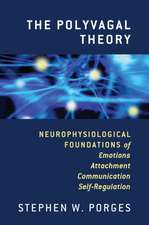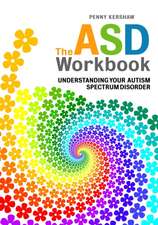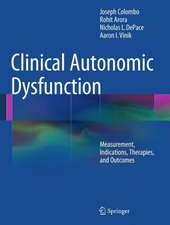Astrocytes in (Patho)Physiology of the Nervous System
Editat de Vladimir Parpura, Philip G. Haydonen Limba Engleză Paperback – 3 mai 2017
| Toate formatele și edițiile | Preț | Express |
|---|---|---|
| Paperback (1) | 1072.42 lei 38-44 zile | |
| Springer Us – 3 mai 2017 | 1072.42 lei 38-44 zile | |
| Hardback (1) | 1243.92 lei 6-8 săpt. | |
| Springer Us – 9 dec 2008 | 1243.92 lei 6-8 săpt. |
Preț: 1072.42 lei
Preț vechi: 1411.07 lei
-24% Nou
Puncte Express: 1609
Preț estimativ în valută:
205.24€ • 212.02$ • 170.81£
205.24€ • 212.02$ • 170.81£
Carte tipărită la comandă
Livrare economică 21-27 martie
Preluare comenzi: 021 569.72.76
Specificații
ISBN-13: 9781489979117
ISBN-10: 1489979115
Pagini: 738
Ilustrații: XX, 738 p. 119 illus., 32 illus. in color.
Dimensiuni: 155 x 235 mm
Greutate: 0 kg
Ediția:Softcover reprint of the original 1st ed. 2009
Editura: Springer Us
Colecția Springer
Locul publicării:New York, NY, United States
ISBN-10: 1489979115
Pagini: 738
Ilustrații: XX, 738 p. 119 illus., 32 illus. in color.
Dimensiuni: 155 x 235 mm
Greutate: 0 kg
Ediția:Softcover reprint of the original 1st ed. 2009
Editura: Springer Us
Colecția Springer
Locul publicării:New York, NY, United States
Descriere
Astrocytes were the original neuroglia that Ramón y Cajal visualized in 1913 using a gold sublimate stain. This stain targeted intermediate filaments that we now know consist mainly of glial fibrillary acidic protein, a protein used today as an astrocytic marker. Cajal described the morphological diversity of these cells with some ast- cytes surrounding neurons, while the others are intimately associated with vasculature. We start the book by discussing the heterogeneity of astrocytes using contemporary tools and by calling into question the assumption by classical neuroscience that neurons and glia are derived from distinct pools of progenitor cells. Astrocytes have long been neglected as active participants in intercellular communication and information processing in the central nervous system, in part due to their lack of electrical excitability. The follow up chapters review the “nuts and bolts” of ast- cytic physiology; astrocytes possess a diverse assortment of ion channels, neu- transmitter receptors, and transport mechanisms that enable the astrocytes to respond to many of the same signals that act on neurons. Since astrocytes can detect chemical transmitters that are released from neurons and can release their own extracellular signals there is an increasing awareness that they play physiological roles in regulating neuronal activity and synaptic transmission. In addition to these physiological roles, it is becoming increasingly recognized that astrocytes play critical roles during pathophysiological states of the nervous system; these states include gliomas, Alexander disease, and epilepsy to mention a few.
Cuprins
Astrocyte Heterogeneity or Homogeneity?.- Neural Stem Cells Disguised as Astrocytes.- Neurotransmitter Receptors in Astrocytes.- Specialized Neurotransmitter Transporters in Astrocytes.- Connexin Expression (Gap Junctions and Hemichannels) in Astrocytes.- Regulation of potassium by glial cells in the centralnervous system.- Energy and Amino Acid Neurotransmitter Metabolism in Astrocytes.- Calcium ion signaling in astrocytes.- Astrocytes in Control of the Biophysical Properties of Extracellular Space.- Structural association of astrocytes with neurons and vasculature: Defining territorial boundaries.- Synaptic Information Processing by Astrocytes.- Mechanisms of transmitter release from astrocytes.- Release of Trophic Factors and Immune Molecules from Astrocytes.- Molecular approaches for studying astrocytes.- The tripartite synapse.- Glia-derived D-serine and synaptic plasticity.- Purinergic signaling in astrocyte function and interactions with neurons.- Astrocyte control of blood flow.- A Role for Glial Cells of the Neuroendocrine Brain in the Central Control of Female Sexual Development.- Physiological and Pathological Roles of Astrocyte-mediated Neuronal Synchrony.- Role of Ion Channels and Amino-Acid Transporters in the Biology of Astrocytic Tumors.- Connexins and pannexins: Two gap junction families mediating glioma growth control.- The Impact of Astrocyte Mitochondrial Metabolism on Neuroprotection During Aging.- Alexander Disease: A Genetic Disorder of Astrocytes.- Role of Astrocytes in Epilepsy.- Hepatic Encephalopathy: A Primary Astrocytopathy.
Textul de pe ultima copertă
Due to their lack of electrical excitability, astrocytes, a subtype of glial cell, have long been neglected as active participants in intercellular communication within the central nervous system. Astrocytes, however, possess a diverse assortment of ion channels,
neurotransmitter receptors, and transport mechanisms that enable them to respond to many of the same signals that act on neurons. Astrocytes in (Patho)Physiology of the Nervous System provides readers with a comprehensive description of the physiological roles astrocytes play in regulating neuronal activity and their critical involvement in
pathophysiological states of the nervous system, including gliomas, Alexander's disease, and epilepsy. This book will be particularly useful for researchers, students, and workers in the field of neurobiology and cell biology.
About the authors:
Vladimir Parpura, M.D., Ph.D holds both a medical degree, awarded from the University of Zagreb in Croatia in 1989, and a doctorate, received in Neuroscience and Zoology from Iowa State University in 1993. He has held faculty appointments at the Department of Zoology and Genetics, Iowa State University and the Department of Cell Biology and Neuroscience, University of California Riverside. He is presently an Associate Professor in the Department of Neurobiology, University of Alabama Birmingham. His current research focuses on understanding the modulation of calcium-dependent glutamate release from astrocytes.
Philip G. Haydon, Ph.D received his doctorate from the University of Leeds, England in 1982. He has held faculty appointments at the Department of Zoology and Genetics, Iowa State University, the Department of Neuroscience at the University of Pennsylvania, and has recently moved to Tufts University School of Medicine as Professor and Chair of the Department of Neuroscience. His research focuses on the role of astrocytes in the regulation of synapses, neuronal networks and behavior as well as how these glial cells contribute to neurological disorders.
neurotransmitter receptors, and transport mechanisms that enable them to respond to many of the same signals that act on neurons. Astrocytes in (Patho)Physiology of the Nervous System provides readers with a comprehensive description of the physiological roles astrocytes play in regulating neuronal activity and their critical involvement in
pathophysiological states of the nervous system, including gliomas, Alexander's disease, and epilepsy. This book will be particularly useful for researchers, students, and workers in the field of neurobiology and cell biology.
About the authors:
Vladimir Parpura, M.D., Ph.D holds both a medical degree, awarded from the University of Zagreb in Croatia in 1989, and a doctorate, received in Neuroscience and Zoology from Iowa State University in 1993. He has held faculty appointments at the Department of Zoology and Genetics, Iowa State University and the Department of Cell Biology and Neuroscience, University of California Riverside. He is presently an Associate Professor in the Department of Neurobiology, University of Alabama Birmingham. His current research focuses on understanding the modulation of calcium-dependent glutamate release from astrocytes.
Philip G. Haydon, Ph.D received his doctorate from the University of Leeds, England in 1982. He has held faculty appointments at the Department of Zoology and Genetics, Iowa State University, the Department of Neuroscience at the University of Pennsylvania, and has recently moved to Tufts University School of Medicine as Professor and Chair of the Department of Neuroscience. His research focuses on the role of astrocytes in the regulation of synapses, neuronal networks and behavior as well as how these glial cells contribute to neurological disorders.
Caracteristici
Presents latest research of the role of astrocytes in the physiology and pathophysiology of brain










